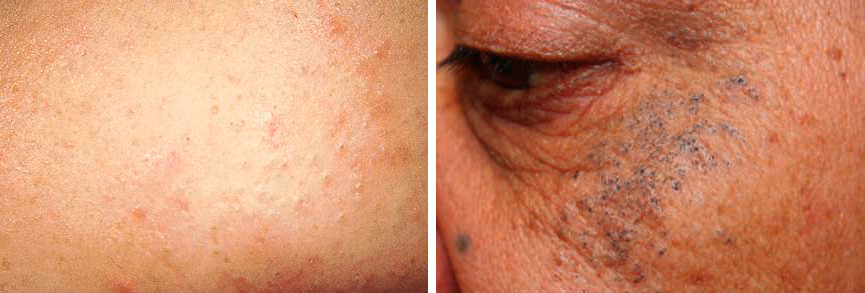Comedones in Cosmetology: Understanding, Identifying, and Managing Blackheads and Whiteheads
Comedones, commonly known as blackheads and whiteheads, are a frequent skin concern encountered in the field of cosmetology. These skin abnormalities result from a buildup of sebum, dead skin cells, and other debris inside hair follicles, leading to blocked pores. This article discusses the nuances of comedones, their types, and the role of a cosmetologist in managing these skin conditions, always respecting state laws and regulations.

Cosmetology
Understanding Comedones
A comedo is the primary sign of acne, a skin condition that affects millions worldwide. It forms when the hair follicle’s pore becomes clogged with sebum and dead skin cells. There are two main types of comedones: open comedones (blackheads) and closed comedones (whiteheads).
- Open Comedones (Blackheads): An open comedo, or blackhead, forms when a clogged pore remains open on the skin’s surface. The sebum and keratin within the follicle, upon exposure to oxygen in the environment, undergo a chemical reaction known as oxidation, which turns the comedo’s surface black. Contrary to popular belief, the black color is not due to dirt or poor hygiene. Blackheads are most commonly found in the T-zone, the area of the face encompassing the forehead, nose, and chin.
- Closed Comedones (Whiteheads): A closed comedo, or whitehead, occurs when a clogged pore is completely covered by a layer of skin, trapping the sebum and dead skin cells underneath and preventing oxidation. These appear as small, white, or flesh-colored bumps on the skin’s surface.

Role of a Cosmetologist in Managing Comedones
Cosmetologists play a vital role in addressing comedones in their clients, from identification to recommending suitable skincare regimes. However, it’s important to note that their role is strictly regulated by state laws and guidelines, particularly concerning physical extraction of comedones.
Identifying Comedones: As beauty professionals, cosmetologists should be adept at identifying comedones during routine skincare procedures. This allows them to provide appropriate advice and care for clients with these concerns.
Educating Clients: Cosmetologists are in a prime position to educate their clients on what comedones are and what causes them. Explaining that comedones are the result of clogged pores and not poor hygiene can go a long way in reducing self-blame and stigma.
Recommending Skincare Regimes: Cosmetologists can guide clients on appropriate skincare routines to prevent and manage comedones. This may include recommending non-comedogenic skincare products, discussing the importance of regular cleansing, and encouraging exfoliation to remove dead skin cells and prevent pore clogging.
Extractions: In some states, cosmetologists are allowed to perform physical extractions of comedones. This should be done cautiously, using a sterile comedone extractor to avoid skin damage or potential scarring. However, it’s crucial to check with your state’s guidelines on performing such procedures.
Referral: If a client’s comedones are persistent, severe, or cause distress, a cosmetologist should recommend the client consult a dermatologist for a thorough evaluation and treatment.
Comedones, while common, can cause distress and negatively impact an individual’s self-esteem. As cosmetologists, understanding these skin conditions and guiding clients on the appropriate measures to manage them can significantly improve their skin health and overall wellbeing. Always remember to operate within your scope of practice and refer clients to a dermatologist when necessary.






